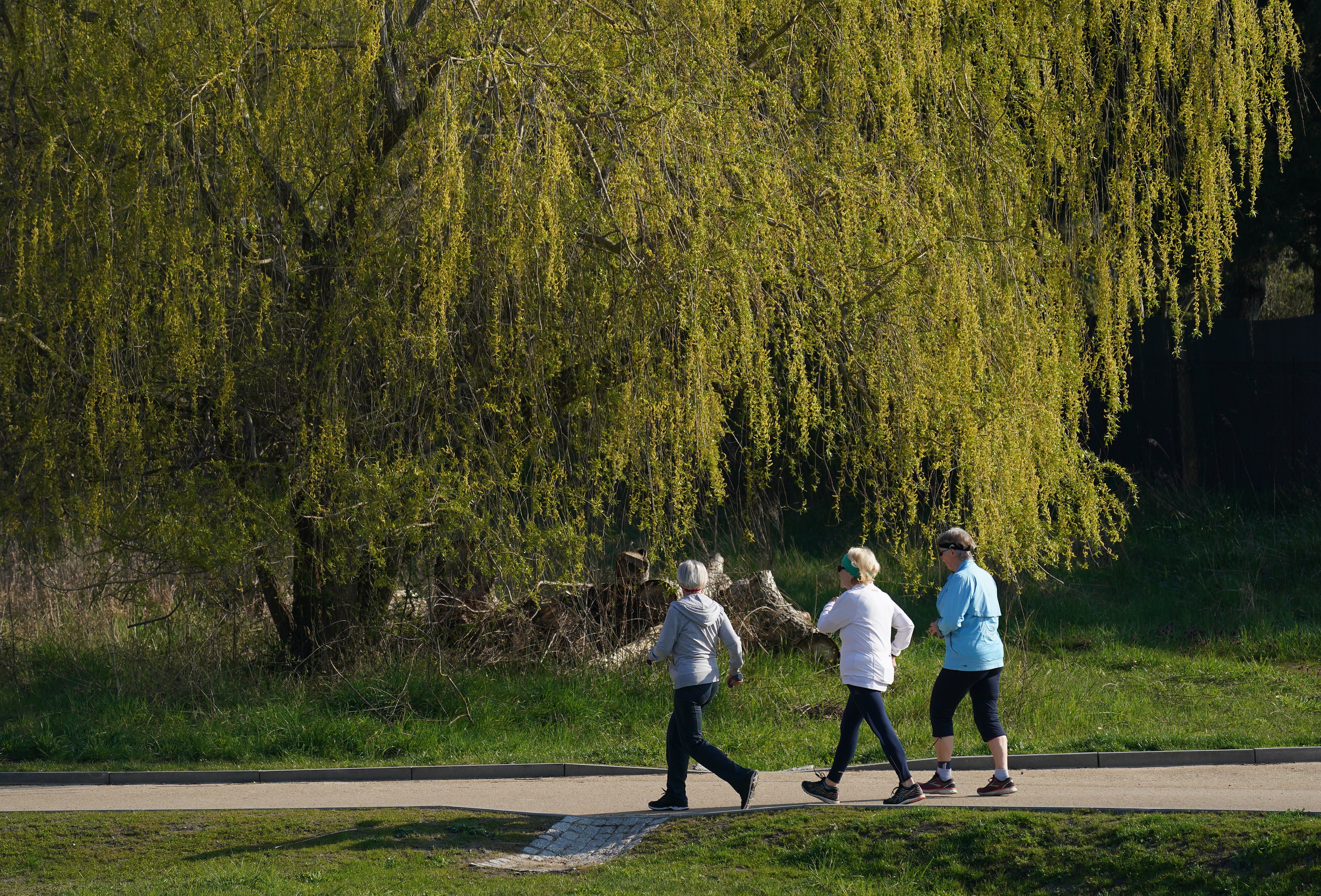
The best of Voices delivered to your inbox every week - from controversial columns to expert analysis
Sign up for our free weekly Voices newsletter for expert opinion and columns
Sign up to our free weekly Voices newsletter
I would like to be emailed about offers, events and updates from The Independent. Read our privacy policy
Just an hour of walking can be so healthy for those over 40 years of age that it may add nearly three years to their lives, a new study suggests.
Researchers from Australia looked at the link between physical activity and life expectancy in people over the age of 40.
The study, published in the British Journal of Sports Medicine, found that if this population could be physically active as the top 25 per cent of the population, they could expect to live an extra five years, on average.
“Our findings suggest that [physical activity] provides substantially larger health benefits than previously thought,” scientists write.
For the least physically active, matching the level of the most active could help them live almost 11 years longer, the estimates suggest.

While it’s known that physical activity is linked to a higher risk of diseases like heart disease, stroke, and even premature death, it is unclear to what extent low physical activity levels shorten lifespan.
In the new study, scientists created a predictive model to calculate the impact of different levels of increased physical activity on life expectancy.
They assessed data on physical activity risk estimates from health tracker data obtained in the National Health and Nutritional Examination Survey of 2003-06 for people aged at least 40.
The data also included 2019 population data from the US Census Bureau and deaths recorded in 2017 from the National Centre for Health Statistics.
Scientists found that the physical activity of the most active 25 per cent of Americans over the age of 40 was about 160 minutes of normal-paced walking at 4.8km (3 miles) per hour each day.
If all people over 40 years of age in the US matched this level of physical activity every day, researchers say their average lifespan could increase by just over 5 years.
This would boost life expectancy at birth to nearly 84 years from 78.6 years in the US, the model estimates.
If the least physically active 25 per cent of the population attempted to match the physical activity levels of the top quarter, they would need to clock up an extra 111 minutes of walking at a pace of 4.8 km/hour every day.
And this could lead to a “great gain” in their life expectancy by nearly 11 years, researchers say.
Further gains to people’s life expectancy were found to decrease as their physical activity rose with every extra hour walked on average likely adding over 2 and a half hours to life expectancy.
However, researchers cautioned that the observational nature of the study can’t establish cause and effect.
Nevertheless, researchers say increased investment in physical activity and the promotion of living environments fostering exercise can yield large gains in life expectancy at the population level.
“Infrastructure measures that encourage active transport, walkable neighbourhoods, as well as green spaces might be promising approaches to increase physical activity and resultant healthy life expectancy at the population level,” scientists say.

 By The Independent (Science) | Created at 2024-11-15 07:49:46 | Updated at 2024-11-15 10:33:26
2 hours ago
By The Independent (Science) | Created at 2024-11-15 07:49:46 | Updated at 2024-11-15 10:33:26
2 hours ago








